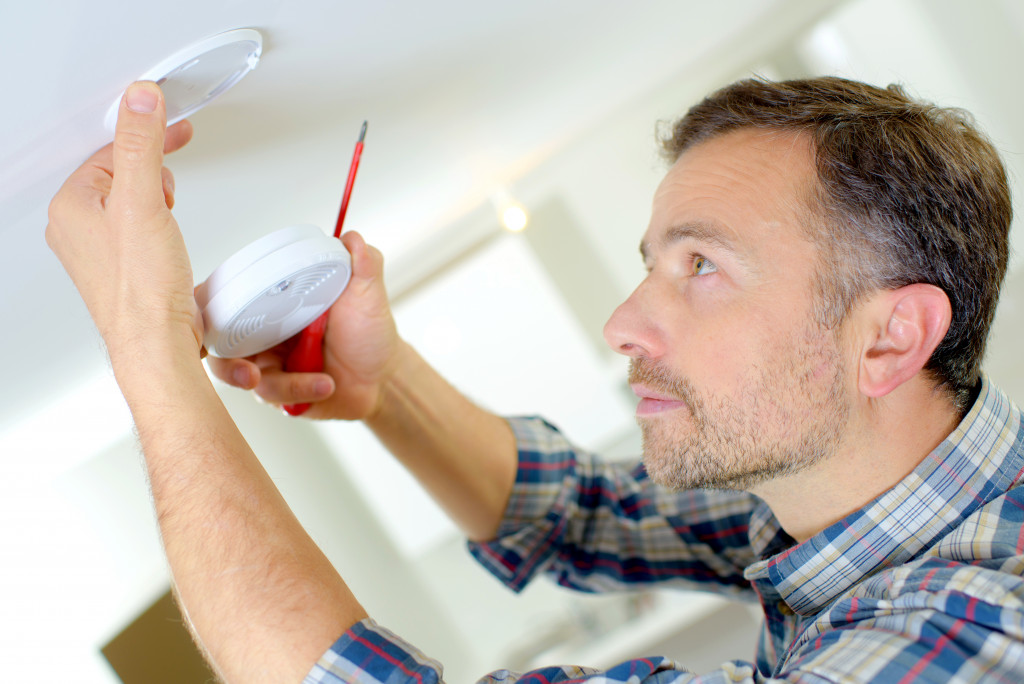Parents want to do everything they can to ensure that their home keeps their children safe and healthy. But sometimes there’s something that you have not thought of. This article will give you some ideas for home improvement projects that can help ensure your children’s well-being at home. You might find something that you haven’t done yet and it’s not too late to do it.
Improvement Projects to Make Your Home Safer and Healthier for Children
If you’re looking for ways to keep your family, particularly your children, safe and healthy at home, check out the following improvement projects.
Security: Doors and Windows
Add a customized security door to your front door. There are various designs available that will enhance the look of your entrance while providing an extra layer of protection.
Add window bars or grilles to basement and ground floor windows. They provide an excellent visual deterrent and make it more difficult for someone to break into your home.
Install a security system to help give you peace of mind whether you’re at home or away. A security system acts as an extra set of eyes and ears that constantly monitors your property 24 hours a day. Surveillance cameras, real-time alerts, and integrated locks provide alerts if anything out of the ordinary happens on your property. That allows you to contact the authorities or respond immediately if necessary.
Fire Safety
Install smoke detectors with alarms and water sprinklers on every level of your home and sleeping areas. Test them monthly and replace the batteries at least once a year. Check if all family members wake up to the alarm late at night.
Ensure that all rooms have fire escapes accessible to all family members. Teach everyone how to use them and practice until everyone can be outside in one to two minutes. That is the safety margin, according to the National Fire Protection Association. If you have children too young to leave the house by themselves, assign an adult to each child to save time in a fire.
Prepare fire escape ladders for every window on the second floor. There are portable ones you can keep by the window and attach outward when needed. Practice using them with all family members.

Safety from Toxic Substances
Install carbon monoxide detectors. Carbon monoxide is a deadly colorless, odorless gas that can leak from many common household appliances. A carbon monoxide detector will sound an alarm if it detects this gas, alerting you to get everyone out of the house immediately.
Check your home for lead-based paint if built before 1978. If you find any, have a professional remove them. Lead-based paint can cause serious health problems, especially in children.
Asbestos is a heat-resistant fiber used in many construction materials before the 1980s. You can find it in insulation, pipe coverings, floor tiles, shingles, and other products. If you have asbestos in your home, do not remove it yourself. Hire a professional to remove it or encapsulate it so that it will not release fibers into the air.
Mold can grow anywhere there is moisture, such as in basements, attics, bathrooms, and laundry rooms. Mold can cause health problems, so it’s essential to keep these areas of your home clean and dry. Fix any leaks right away and use a dehumidifier to help control moisture.
Electrical Safety: Outlets and Wiring
Add tamper-resistant outlets in all rooms where children play or spend time. These outlets have built-in shutters that prevent contact with the electrical current if a child puts an object into the outlet. Some cities and states require these outlets for new construction, so you may already have them in your home. If not, you can get them at any hardware store.
Test light switches, extension cords, and other electrical devices such as heaters to ensure they’re working properly. Ensure that there are no signs of fraying or damage that could lead to an electrical fire. Make sure all exposed wiring is covered with plastic safety caps if it’s not protected behind drywall or wallpaper.
Check to ensure that all sockets have proper grounding connections. Check for ungrounded ones using a voltage tester before plugging in anything important like a laptop computer, space heater, or hair straightener.
Ensure your home has the proper number of outlets for the number of electrical devices you have. Do not overload outlets by plugging in too many devices. Use power strips with built-in circuit breakers to help prevent fires caused by overloaded outlets.
If you have any questions about electrical safety, contact a licensed electrician.
Keep Your Children Safe and Healthy at Home
When it comes to your children’s well-being, there’s no such thing as being too safe. By taking some simple precautions and making a few home improvement projects, you can help ensure that your family is healthy and safe at home. If any of these measures are not yet implemented in your home, you know what your next step must be.

